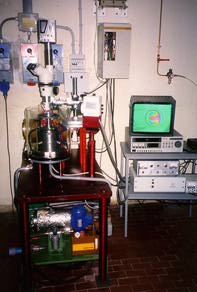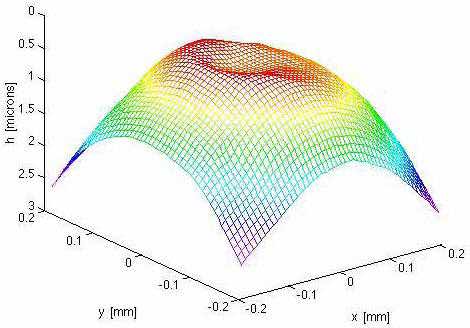ELASTOHYDRODYNAMIC LUBRICATION (EHL)
Theoretical/numerical studies began in the 70's.
Experimental work has been made since the 80's.
Experimental Research

Optical interferometry is one of the most used technique to determine
the film thickness and shape in typical elastohydrodynamic lubrication (EHL)
conditions. Simulations of real machine contacts, such as those between
rolling elements and races of bearings, are realized using transparent discs
and specimens with proper radii of curvature. White or monochromatic lights
are used to obtain interference patterns from which lubricant film thickness
and shape can be evaluated. This experimental apparatus is a typical interferometric
test rig using both white and monochromatic light. Two motors, one for the specimen and one for the disc, allow to do tests with different rolling
and sliding speed conditions.
The Experimental Apparatus

With the use of two gas bearings tests in
pure rolling conditions (with the disc disconnected from its motor and only
moved by the contact with the specimen) and measure of friction force are
also possible.
The interference patterns are recorded using a video camera
and a recorder; stored images are then discarded in a computer and elaborated with an image processing program developed in the MATLAB environment.
Monochromatic (546nm) Interference Image
and corresponding 3-D Mesh Surface Plot (ball-plane contact)

Last modified on March 28, 1998
This page is created by : Enrico Ciulli
and maintained by Enrico Ciulli, ...